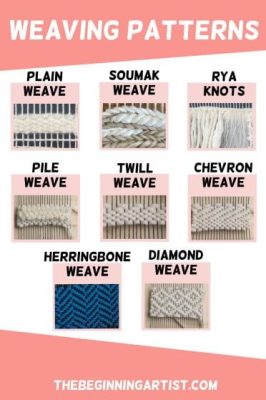Weaving techniques: A guide to the production of fabric from yarn
Weaving is a complex process that requires precision and skill. This article will provide you with an overview of weaving techniques, including the steps involved in producing fabric from yarn.

Materials in weaving
The main material used in weaving is yarn. Yarn can be made from a variety of natural and synthetic fibers, including cotton, silk, wool, polyester, and nylon. Fabric is a versatile material that is used in a wide variety of applications, from clothing and bedding to home furnishings and industrial products. To create fabric, it is necessary to go through a process called weaving.
Weaving process
The weaving process can be divided into three main steps:
- Preparation: Raw yarn must be processed to remove impurities and create the desired yarn material. The processing steps include:
- Bleaching: Bleaching makes the yarn whiter and brighter.
- Grinding: Grinding makes the yarn softer and easier to handle during weaving.
- Heat setting: Heat setting makes the yarn stronger and more resistant to stretching.
- Weaving: Weaving is the most important step in the fabric production process. In this step, the warp (vertical) and weft (horizontal) yarns are interlaced to create fabric.
There are two main weaving techniques: hand weaving and machine weaving. Hand weaving is a traditional weaving technique that uses a loom to weave fabric. Machine weaving is a modern weaving technique that uses machinery to weave fabric.
- Finishing: The finished fabric is then inspected for quality and packaged. The fabric may be dyed or printed to create a variety of finished products.
Types of fabric:
Exploring the Eco-Friendly Arsenal of Sustainable Fabrics: Organic Cotton, Hemp, Tencel, and More
There are many different types of fabric available on the market, each with its own unique properties. Some of the most common types of fabric include:
- Cotton fabric: Cotton fabric is made from cotton yarn and is known for its softness, absorbency, and affordability.
- Silk fabric: Silk fabric is made from silk yarn and is known for its softness, luxury, and high price.
- Wool fabric: Wool fabric is made from wool yarn and is known for its warmth, elasticity, and ability to keep the body warm.
- Polyester fabric: Polyester fabric is made from polyester yarn and is known for its durability, wrinkle resistance, and ease of care.
- Nylon fabric: Nylon fabric is made from nylon yarn and is known for its strength, lightness, and breathability.
Applications of weaving:
Weaving techniques are used in a variety of industries, including:
- Textile industry: Weaving is the main process used to produce fabric for clothing, bedding, and other textile products.
- Automotive industry: Weaving is used to produce fabric for automotive interiors, such as seats and floor mats.
- Aerospace industry: Weaving is used to produce fabric for aircraft components, such as wings and fuselages.
- Construction industry: Weaving is used to produce fabric for concrete reinforcement and other construction materials.
Conclusion: Weaving is a complex and versatile process that is used to produce a wide variety of materials. By understanding the basic principles of weaving, you can gain a greater appreciation for this essential manufacturing process.
You can order or you can have more useful news in our website: https://info@lydigreentex.com.com
WhatsApp/ Viber/ Zalo .No: +84938.045.900
We have all international shipping line to all countries.